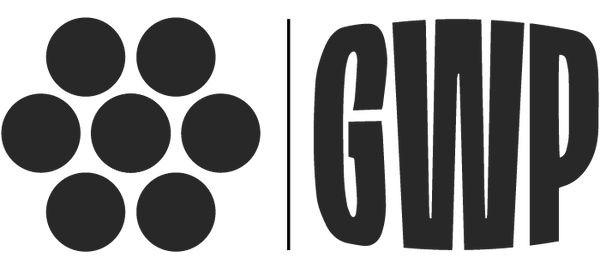
Written by: Lindsay McGuire, MS, CSCS, PT, DPT
We all know that our glutes play a major role in the power and strength of our squats. However, many of us fail to realize the importance of training the specific parts of the glutes and of their influence on injury prevention. This article will discuss the importance of the gluteus medius and its role in not only increasing the strength and power of your squat but also injury prevention.
Location and Action
So where exactly is the glute med in midst of the posterior aspect of the pelvis? It sits at the high end of your gluteus maximus and slightly lateral with an origin around the outer surface of the ilium and an insertion on the lateral surface of the greater trochanter on your femur. (See figure below. 1)

The glute med has several actions. It is a powerful abductor of the hip and during walking it holds the opposite side of the pelvis steady to prevent a contralateral hip drop (see below2) which would result in biomechanical misalignment and potential issues in the future. (We will not discuss the hip drop issue in this article)

However, what we will be discussing is the issues that can arise during our squats. I have seen many individuals have the problem of their knees “kissing” during either the eccentric OR concentric portion of their squats. For those who have not heard this term before, it essentially means your knees cave in or move medially during a squat. This is usually (not always) a direct result of a weak glute med. It could also stem from other weaknesses or mobility issues in different joints as well.

The picture above is an exaggerated image but even the slightest bit of caving or misalignment can decrease your power and strength coming out of the hole and it can also lead to several injuries in the future. 3
One common injury I would like to discuss briefly is called Patellofemoral Pain Syndrome. This is one of the most common issues I have found in general knee pain amongst powerlifters. This is caused by the patella tracking incorrectly and repetitive overuse. Characteristics of this condition are the following: generalized knee pain, when sitting with your knees bent, pain in the front area of the patella while squatting, jumping or going up/down stairs. 4
When your knees cave in during your squat, the patella can’t move in proper alignment causing inflammation and pain resulting in this painful condition. Personal note: I had this condition for about 7 months and I still struggle with it from time to time. It got to the point where I could not even do a bodyweight squat as the pain was so excruciating. I also had constant and agonizing pain while I was sitting. I went to a physical therapist who showed me a few simple exercises to do a few times a week and I am now back to squatting over 300 lbs with no pain. If I ever do feel pain coming back on, I throw these exercises into my routine 4-5 times a week and the pain goes away again.
Quick and easy exercises to strengthen your glute med:
Clam shells. Yes, typical physical therapist, I know. I hate these and they are extremely boring but I learned from personal and clinical experience that they are unbelievably effective. My suggestion is to do these against the wall. Make sure both of your buttcheeks, your back, and your heels are against the wall. This will prevent you from producing a whole body rotation to generate the movement and leave your glute med to doing the majority of the work. You can add a band around your knees if this becomes too easy for you. Perform 2-3 sets, 15-20 reps, 2 times a day. (See image below)
Monster steps (Side ways)
With these, make sure your knees stay turned out and do not let them cave in. You can do these stationary or walk laterally. Mark Bell created a sling shot hip circle that works extremely well for this. You could also use an EliteFTS short monster mini band (that’s what is being used below). Both work pretty well for these exercises. (See images below.)


Side Leg raises
These are actually more complicated than you would think. First, again make sure both butt cheeks and shoulder blades are against the wall. Then rotate your toes and leg towards the ceiling, keep your heel against the wall and lift your leg. Make sure to not use your back to perform the lift. Hold your leg up for 10 seconds then slowly lower back to the ground. Reset and start over again. (See images below.)


Summary: The glute med is a very powerful muscle that is crucial in performing a proper squat and providing injury prevention. Incorporating these simple exercises into your weekly routine can not only improve your squat mechanics but also assist in getting you that next PR and keeping you away from the sidelines due to injury. For those who do have knee pain, if your pain does not improve or continues to worsen, you may consider seeing your primary care physician or local physical therapist to further address these concerns. Again for those who do not have knee pain, these are exercises are a safe and easy way to prevent issues in the future. If any of these exercises cause pain do not continue to persist as this may indicate that these are not appropriate for you.
Learn more about Lindsay
References:
- https://experiencelife.com/article/fitness-fix-strengthening-your-pelvic-floor-muscles/. Accessed August 3, 2017.
- runnersconnect.net https://runnersconnect.net/hip-strength-and-running-form-the-role-of-hip-drop-in-running-injuries/.
- https://http://www.youtube.com/watch?v=CY7j_TgalLY. Accessed August 3, 2017.
- Patellofemoral Pain Syndrome. WebMD http://www.webmd.com/pain-management/knee-pain/tc/patellofemoral-pain-syndrome-topic-overview.


0 comments